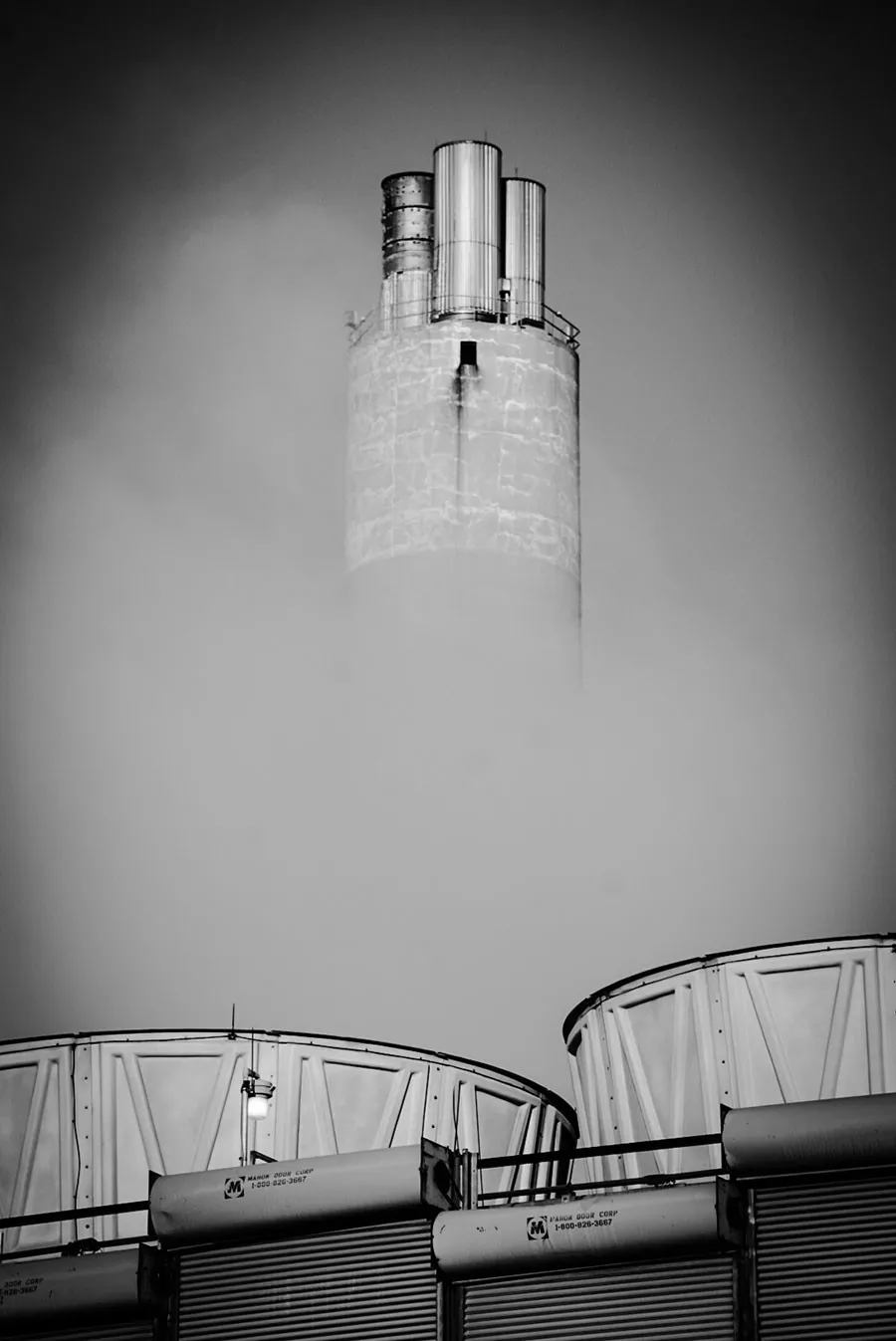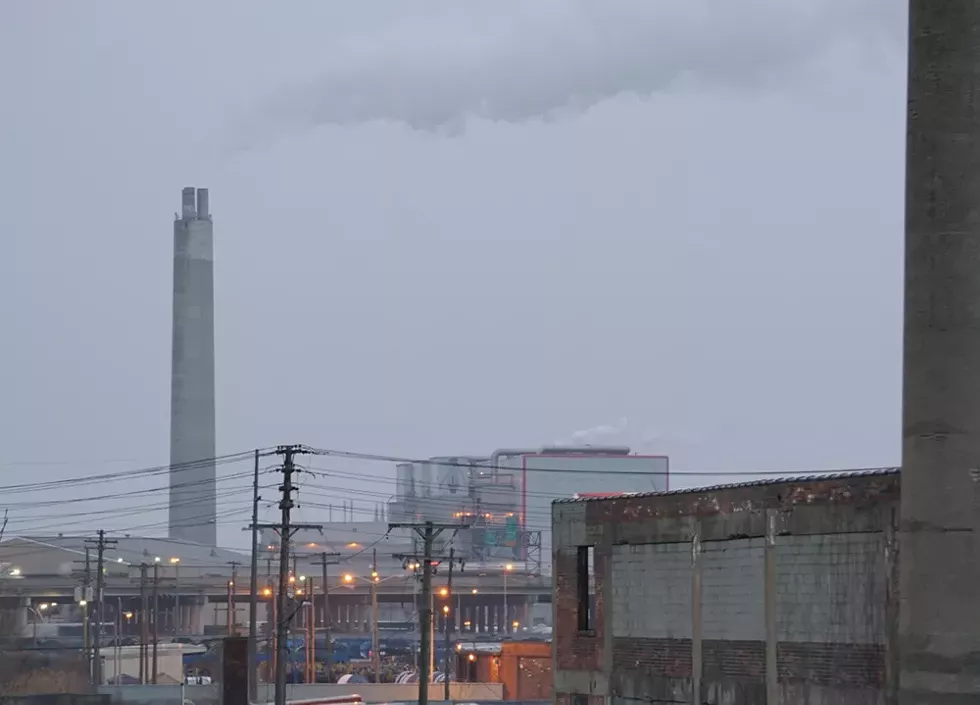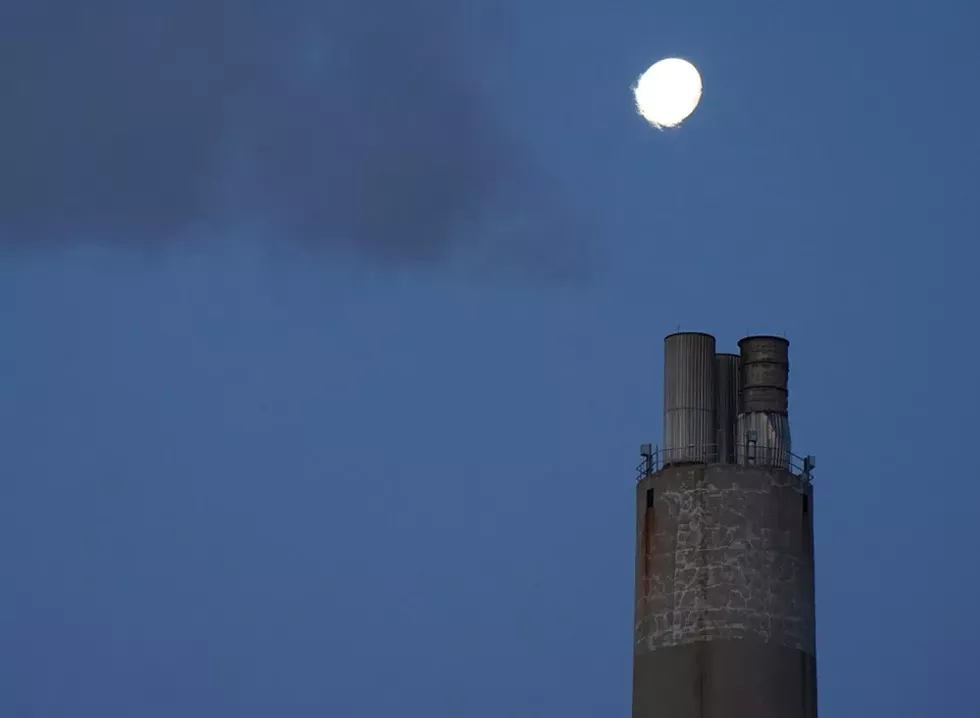Detroit's Farnsworth Street neighborhood presents a stark contrast with much of the surrounding area. While disinvestment and decline have taken their toll on much of the east side, Farnsworth, especially one block of it, remains thickly planted with houses, backyard gardens, and neighborhood gathering spaces. Many of the households are families, and gaggles of children playing on the sidewalk add to the neighborhood's vitality.
Despite the lively street scene, the residents of Farnsworth, like an estimated 7,280 other Detroiters, all live within one mile of a major quality-of-life issue — Detroit's big burner, the waste-to-energy plant of Detroit Renewable Power. The facility burns garbage to generate steam and electricity. In terms of tons-per-day capacity, it's probably the largest facility in the country.
It's also often the source of a horrible stench, as rotting garbage waits to be burned. Residents say the noise it generates can be loud enough to rattle windows a mile away. And its stack is the source of health-threatening pollution, including particulates and sulfur dioxide. A decade ago, the ZIP codes near the facility had the highest rates of asthma hospitalization in Detroit — where the asthma hospitalization rate is already triple the state average.
Melissa Cooper Sargent, 44, is a mother of four who has lived within a mile of the incinerator for almost eight years. So far, her own children have avoided health problems, but she can quickly name several neighbors whose children have developed asthma or other health issues. "Once you become a parent," she says, "you become hyper-aware of children being exposed to effects. It can affect their development. Their immune systems are not as strong as ours. They breathe more air and eat more food pound for pound, so they're ingesting more."
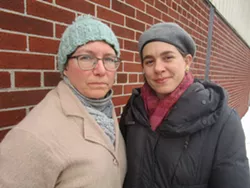
Her neighbor Lori Cataldo, 43, also a mother with a child at home, has a list of complaints about the incinerator, especially the smell of garbage waiting to be burned and the noise of the facility.
"There are times when — oh, man — you've got to go inside for a little bit and wait for this to blow over," she says. "It seems like it's at its worst on Sundays, when people are having their family gatherings in their gardens or kids are out playing. We have a meditation booth on the corner of Frederick and Elmwood, and every Sunday morning we sit for about an hour. But, depending on which way the wind's blowing, we'll have to get up and go sit in a greenhouse, or just get up and go. And we call DEQ [the state's Department of Environmental Quality] every time. Everyone's got the number."
And the noise bothers Cataldo day and night.
"I feel like that's a fairly new thing," Cataldo says, "like, within the past couple years? It hasn't always been there. I have to close our windows some days. When the machines' on it's like there's a jet or a helicopter or some engine right over your house, just whoosh-whoosh-whoosh. It's so loud, and sometimes it's at 3 a.m."
How did a greenhouse-gas-emitting big burner end up in the middle of a densely populated Detroit neighborhood? For the answer, we have to go back to the 1970s, a time when — believe it or not — the idea didn't seem as outrageous as it does today.
Of course, almost 50 years ago, Detroit was a different world. The background level of pollution was higher. The Environmental Protection Agency was newly created. The energy crisis was in full swing. Leaded gasoline was only beginning to be phased down. And anxieties about population growth and other concerns had city officials worried about available space for landfills.
The solution, some experts said, was to build incinerators to burn trash, produce energy, and use state-of-the-art technology to reduce pollution to negligible levels. In 1975, with the approval of then-Mayor Coleman A. Young, planning began in Detroit for one of the largest waste-to-energy facilities in the country. The incinerator's supporters envisioned the plant as a revenue-generator for Detroit: Suburban communities would clamor for the right to send their garbage to Detroit's cheaper-than-landfilling burner, which would then provide inexpensive energy to heat and power downtown's office buildings, with almost no pollution.
But almost as soon as the plant began being built, it became clear that environmental controls wouldn't be as stringent as originally envisioned. For instance, it was revealed that a burner planned for San Francisco by the same company contracted to build Detroit's would have more effective pollution controls. During test burns of Detroit's incinerator in 1988, workers grew ill, suffering blisters and rashes, nosebleeds, and swollen throats. At one point, employees were warned not to wear their work clothes home to protect their families.
By the time the plant was opened in 1989, amid turbulent public protests, the costs had become enormous. The city issued $478 million in bonds to construct the facility, and then, in 1990, after Lansing demanded upgraded air pollution control equipment for the plant, the city had to take on another $179 million in debt. Before the plant was even paid off, the city sold it to a private owner in 1991 for a mere $54 million. Only in 2009, 20 years after the facility opened, did Detroit pay off the tab, which, including interest, amounted to at least $1 billion. According to analysis by the Ecology Center in 2008, the city's total spending reflected a cost of $172 a ton to burn its trash and then send the remaining toxic ash to a dump. Meanwhile, a coalition of a dozen southern Oakland County communities paid $18.75 a ton to send garbage to a landfill.
In 2010, the opportunity to renew the city's contract with the incinerator was put before the Bing administration's appointees on the Greater Detroit Resources Recovery Authority, or GDRRA (often pronounced Ghidorah, for the three-headed flying monster of the Godzilla movies). Despite the glut of affordable landfill space in Michigan, the quasi-public entity responsible for Detroit's waste stream locked Detroit into another long-term deal with the burner.
As the world changes around it, the facility continues to sputter, smell, and smoke, all while draining money from the city it helped bankrupt.
tweet this
Even as the economy turned south and Detroit faced bankruptcy, the giveaways kept coming. In 2008, the state had redefined waste-to-energy power as "renewable," making the facility eligible for valuable green energy credits. In 2011, the facility's new owners came to Detroit City Council seeking $4.1 million in brownfield credits. The request was granted. In 2013, the owners completed a deal with the Michigan Strategic Fund for $55 million in tax-exempt bonds.
It would seem that the incinerator lives something of a charmed life in a changing world. The burner has passed from owner to owner, now under the same corporate umbrella as the century-old downtown steam system, a package deal bought last year by Basalt Infrastructure Partners II LP and DCO Energy. As the world changes around it — with the rise of recycling, the affordability of landfills, growing awareness of environmental justice, a culture that increasingly frowns on pollution, anxiety over climate change — the facility at the intersection of I-75 and I-94 continues to sputter, smell, and smoke, all while draining money from the city it helped bankrupt. Why is that? We asked the people who have opposed it, some of them for decades, for an answer.
One of the most obvious annoyances of the incinerator is apparent to anybody driving down the freeway on a muggy, hot, summer day. In the still summer air, all the trash that waits for incineration does exactly what trash does in warm temperatures: It rots. As it rots, it sends up a rancid stink that can spread out for more than a mile in every direction.
This is the problem activists have had the most success complaining about. The Michigan Department of Environmental Quality has been responsive to these grievances, and the facility entered into a consent judgment with the state's attorney general in 2014. But William Copeland, the climate justice director of the East Michigan Environmental Action Council, points out that the odor is just as easy to misinterpret as it is to register.
"I remember, as a kid, we would drive on the freeway, and it would just stink," he says. "We'd be like, 'It stinks. Ugh, Detroit stinks.'"
"For a lot of people, that's all they know. They don't know where the smell is coming from, much less that that smell is a violation, or that they can do something about it."
‘I remember, as a kid, we would drive on the freeway, and it would just stink. We’d be like, “It stinks. Ugh, Detroit stinks.”’
tweet this
"That sort of messaging is the first part of the public campaign, to let people know that there's something that's not right here," Copeland says. "So we say, 'No, that's an incinerator, and they're violating their permit. And if it stinks, call this number and report them, and somebody will come and check on them, which actually has a tangential effect of costing the facility money.' That's very different than, 'Ugh, Detroit stinks.'"
It's the kind of educated response Copeland helps spread with Breathe Free Detroit, a campaign he and other environmental activist groups joined forces in 2016 to create.
"We wanted to create a separate vehicle to bring this issue of incineration to a new generation, to make it a live issue so that people know what's going on," Copeland says. "We've been successful touching the 20-year-olds, whether they're the young activists or just people who've moved to Detroit, some combination of young Detroiters. A whole new group of people has come in."
"The reason why we get on the smell is because, legally, that's what's moving MDEQ," he says. "We don't have a legal arm to grasp on the emissions right now, though we're definitely concerned about it, but the smell is a nuisance violation. And MDEQ is more responsive to that."
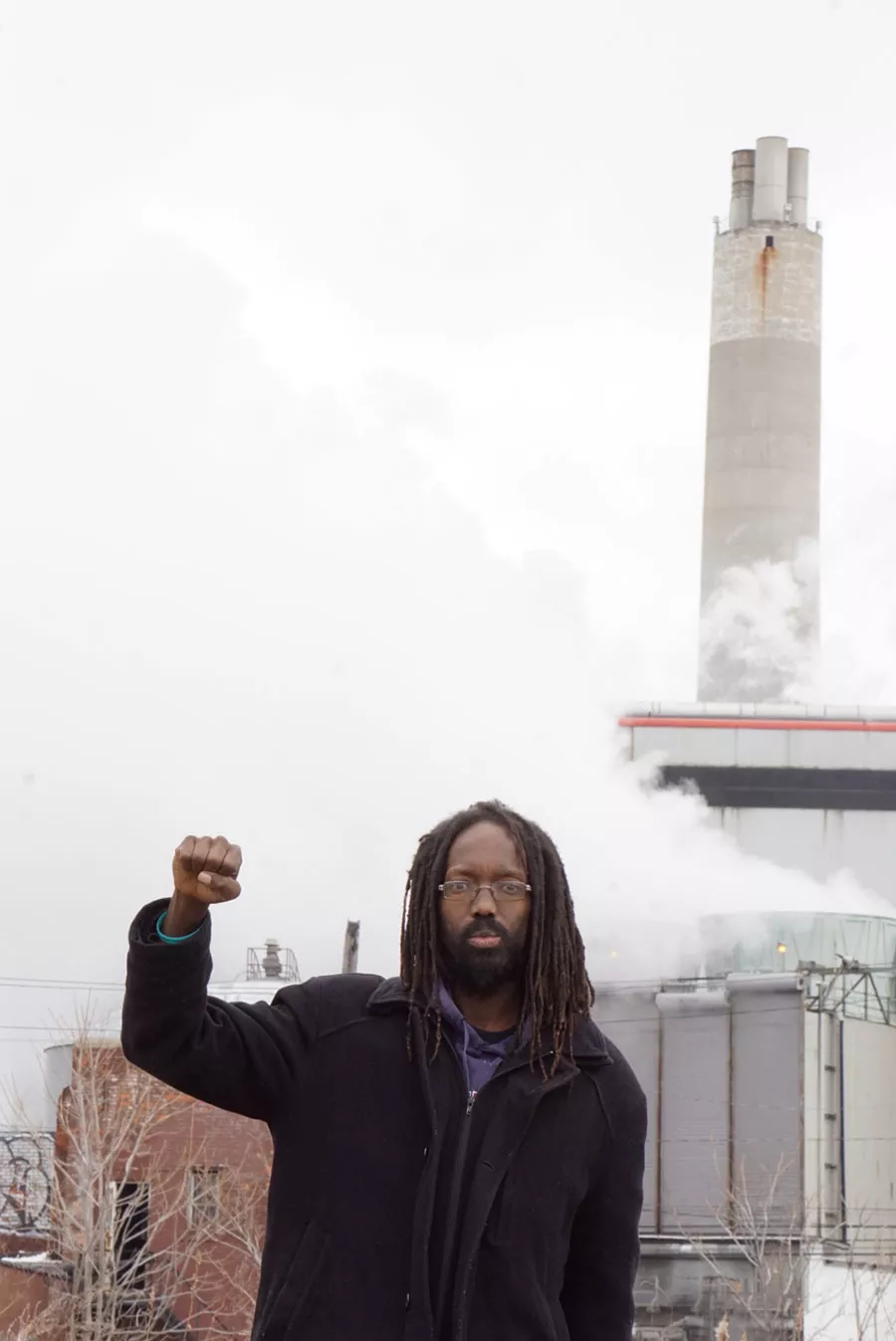
But the incinerator does more than smell: It releases allowable amounts of toxic chemicals and particulate emissions. According to the analysis by Community Action to Promote Healthy Environments, emissions from the DRP facility can be linked to premature deaths, hospitalizations, childhood asthma, and more.
But the big burner often blows over the limit, and when it does, it's fair to say MDEQ gives it the benefit of the doubt. The department's mission was outlined for it by its creator Gov. Rick Snyder. According to its website, one of the DEQ's three "guiding principles" is to be "partners in economic development." As a regulatory body, it often resorts to discretion when dealing with those who break the rules again and again. When those negotiations are complete, sometimes several violation are bundled into one, sometimes an isolated exceedance will not be alleged, and sometimes even when it is there may be no penalty attached to it.
As Nick Leonard of Great Lakes Environmental Law Center puts it, "Our problem with MDEQ is, they entered an administrative consent order with the facility but they didn't include allegations for many of the exceedances of air emissions standards that have occurred. MDEQ is free to exercise their enforcement discretion so they can say, 'We're going to assess a penalty for this violation and not for this one.' And so we basically did a FOIA request to figure out just how many times the facility had exceeded air quality standards."
Leonard and his group have found that, since the start of 2013 until the third quarter of 2017, the incinerator has exceeded air emissions standards 700 times. "But a lot of those were basically exceedances that MDEQ decided not to pursue enforcement action on for whatever reason," he says.
But the fact that the incinerator regularly exceeds emission limits of harmful gases doesn't touch upon the facility's particulate emissions. Particulate matter is made up of tiny pieces of solid exhaust that come out of the incinerator's stack. They are often classified as PM10 — the coarser matter around 10 microns across — and PM2.5 — particles 2.5 microns across and smaller. Leonard says the incinerator doesn't test for the smaller matter, which can actually pass into the bloodstream via the lungs, contributing to respiratory and cardiovascular.
"They basically use the coarse particulates — the PM10 — as basically just an indicator of what those fine particulates might be," Leonard says.
But while researching the facility, Leonard and others discovered that, around late 2015 and early 2016, for a period of at least 64 days, one boiler released exhaust monitored without operational pollution control technology for particulate matter.
"There was a sustained violation of the particulate matter standard. There was a corroded hole in their pollution control technology that allowed particulate matter to essentially bypass it and to escape into the stack and then go out into the surrounding environment," Leonard says. "So what we know is that that corroded hole was there for at least 64 days when that specific boiler was in operation. What we don't know is how long it was there before they conducted that test." The emissions, a known cause and trigger of asthma, may have gone on longer.
The outcry about these air pollution exceedances came to a climax last year, after the MDEQ drew up a draft consent order that considered penalizing the facility $149,000 over a mere handful of the 379 violations involving sulfur dioxide, carbon dioxide, and particulate matter. The department held a public hearing to allow the incinerator's neighbors a chance to squawk.
Activist Will Copeland remembers: "We did great as far as education and turnout. I don't think they expected so many people to be at this meeting, and to hear about dozens of messages saying that they should fine them more. If you break it down by fine by period of time covered, they turn out to be very minuscule per violation. That hearing was all these people saying this one thing and two people saying this other thing."
That meeting also drew Farnsworth street moms Lori Cataldo and Melissa Cooper Sargent. Cooper Sargent recalls how she, her neighbors, and about 50-plus people in total testified for two or three hours about how the incinerator negatively impacted their lives. She and others forcefully demanded that, for violating clean air laws, they should be fined appropriately, not slapped on the wrist.
"And then the MDEQ takes all that testimony," she says, "and comes back months later saying, 'We looked at all of the testimony and we're not changing anything.'"
"So I'm left asking why? Why did we go there and talk to them and spend all that time? Also, what really boggles my mind is, they have a consent agreement, so when the facility violates clean air laws, the facility has negotiating power about what they're going to pay as a result of their violations. It's just mind-boggling how much power the facility has — even though they've broken the law."
Ultimately, the facility paid fines of $149,000 for a half-dozen violations. The nine continuous weeks of excess particulate emissions were counted as one single violation. More than 300 violations of carbon monoxide releases were excused because they occurred during startup, shut-down, or due to a malfunction. Many others, however, were not alleged as violations solely at the discretion of MDEQ.
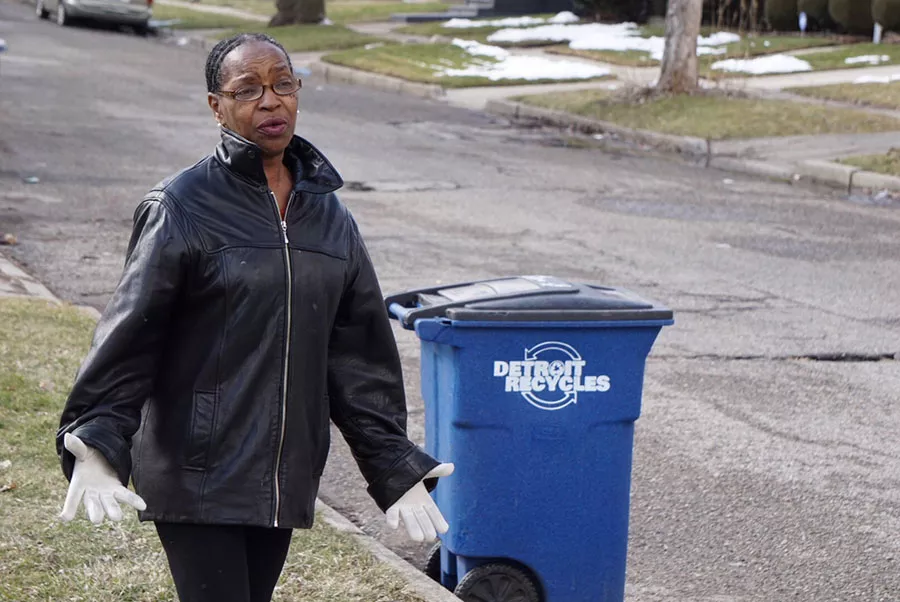
Leonard and others insist the resulting fines are not enough to change the company's behavior. After spending some time looking over the incinerator's records from 2017, Leonard says he doesn't see practices that are all that different from the past. Little to nothing has changed.
Many of the activists we spoke with insist, however, that MDEQ, as a department, is full of good people trying to do a job in a tough environment. The department itself has been a political football almost since its inception. In the last year, Democratic lawmakers have proposed giving citizens more oversight, and Republican legislators have proposed giving industry groups final say over its decisions.
In the end, the department is compelled to engage in a process. While many staffers understand citizens would like to see polluters socked in the pocketbook, the law dictates a formal, gradual approach. Malcolm Mead-O'Brien, who works in environmental enforcement with MDEQ's Air Quality Division, even goes as far as saying he's sympathetic to the perspectives of frustrated citizens, but that the negotiation process, though imperfect, gives the department a better chance to bring the facility into compliance.
"We have a legal obligation to go to a facility that is in noncompliance and give them an opportunity to discuss it, present their facts, and to enter into an administrative settlement," he says. "If they don't want an administrative solution and we still believe there's a violation, then we may refer that to the Department of the Attorney General. If it's a repeat violation ... we may very quickly end up at the Attorney General's office."
And even then, settlements would still be part of a process where a jury or a judge would negotiate penalties. Given these realities it's easy to see why enforcement officers believe it's better to have a facility's operators sitting at the same table than across from them in court.
Ultimately, the place where the rubber really meets the road is in the political decisions that govern a department, its processes, and its guiding principles.
Or to quote MDEQ head Heidi Grether regarding another controversial matter, the department's decision to OK Nestlé's water takings in Osceola County — even though almost 90,000 Michiganders contacted the department urging the permit be rejected — Grether said "but most of them related to issues of public policy which are not, and should not be, part of an administrative permit decision."
Over the last decade, as recycling programs have made headway in the suburbs and slowly expanded in the city, activists have come to a realization: One of the main obstacles to local recycling programs is the appetite of a giant garbage-to-energy plant built to service a population of 1 million people.
Margaret Weber, convener of the group Zero Waste Detroit, says, "Having that great big thing that needs to be fed has meant that any culture of waste reduction or minimization was moot. What it does is it drives the imperative to feed it."
Since the garbage that produces the most BTUs in an incinerator are typically the easiest to recycle, the facility presents an obstacle to recycling. So much so that part of the deal Detroit made to get the plant included an obligation that the city send its trash to the incinerator.
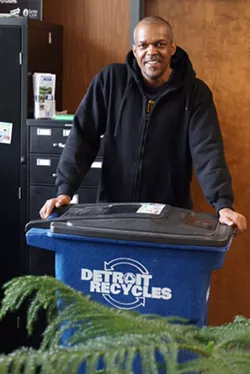
Only recently have activists begun to chip away at that obligation. Weber and her colleagues, Sandra Turner-Handy and Galen Hardy, work tirelessly to help point the city away from incineration and toward recycling, from advising members of City Council to educating individual Detroiters on the street. The group worked with Councilwoman JoAnne Watson's task force on environmental justice and emerged as the primary advocates pushing the city to do recycling. Thanks to their consistent advocacy, the city started a pilot program, expanded it, and finally established provisions in city contracts with waste haulers that they must offer recycling. In 2009, the group declared a victory of sorts when the city was no longer contractually bound to send trash to the incinerator anymore.
"That was a great thing," Turner-Handy says. "You know, Detroit could send one bag and we would meet our obligation."
That set the stage for the group to educate Detroiters, which then ramped up recycling and saved trash from being burned. Hardy, who sometimes educates the public by setting up shop on a corner in the neighborhoods, says, "We try to explain to residents the trash never 'goes away,' because once you dump it in a black container, it all gets burned up and it comes back to us by way of air pollution. So it's important that residents make informed choices, that they can say, "Hey, I'm not going to participate and keep throwing my trash in this black container so it can be burned up. What I'm going to do is make a conscious effort to recycle and hopefully remove that from the waste stream.'"
If it were up to Detroiters, there might no longer be enough trash to keep the burner fired up. And given the shrinking city and expanding recycling efforts, the incinerator's future would be in doubt.
Except for one thing: As Hardy puts it, "They could always bring in more trash to replace our trash."
"Even though we have more and more residents learning to recycle, which is reducing the amount of trash for incineration," Turner-Handy says, "they are able to replace it with trash from the surrounding suburbs."
Just how much incinerator-bound trash comes from Detroit and how much comes from its suburbs is a hotly contested matter. Turner-Handy says that reports from the incinerator and the city of Detroit to Wayne County for 2015 and 2016 showed only 19 or 20 percent coming from the city, and an astonishing 67 percent coming from Oakland County.
"When we said that at the public hearing," Weber says, "they turned around and adjusted their reports." Weber says Detroit Renewable Power's adjusted numbers almost doubled the amount of trash they said was sourced from Detroit. And yet when a lawyer examined the invoices submitted by the facility to GDRRA in 2016, his findings supported the original filings: The invoices showed that Detroit sent 200,110 tons of solid waste to the incinerator in 2016, representing 22 percent of the waste received by the burner that year. Weber and company are still waiting for an explanation from Wayne County, which still hasn't resolved the matter to their satisfaction.
‘Having that great big thing that needs to be fed has meant that any culture of waste reduction or minimization was moot. What it does is it drives the imperative to feed it.’
tweet this
The very thought that the city's trash is replaced by trash from the suburbs creates another problem for street-level activists trying to steer Detroiters toward recycling. Turner-Handy says, "Even though we're pushing to change the culture of residents in the city of Detroit, to reduce the impact of the incinerator on the health of the residents — you know, because whatever we're recycling they're making up for with someone else's trash, I feel sometimes that I'm really not telling the truth because the impact is the same. And that's discouraging to people who truly believe that this is an environmental justice issue because the trash is coming from wealthier communities."
Activists also point out that Detroit is contractually bound to pay more to burn its trash than surrounding communities — $25 a ton, versus the $15 a ton paid by Warren or the Grosse Pointes, for instance — at least until 2021.
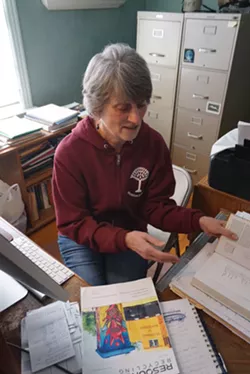
Another wrinkle of this story is the revelation that the trash reportedly doesn't even need to be burned to furnish customers with steam.
"They can burn natural gas," Weber says.
"We've seen it happen," Turner-Handy adds.
About eight years ago, Detroit Thermal, owners of the steam grid, and Covanta, owners of the incinerator, could not come to an agreement on the price of steam. And the incinerator shut down.
"For a few days," Weber says, "Detroit Thermal bought their energy. They used natural gas and provided the steam that was needed. So we know it can be done with natural gas. We actually were in the plant watching this. The then-president of Detroit Thermal told us to our faces, 'No, we aren't shutting down. We have to service our customers. We're using natural gas. It's not a problem."
Weber and Turner-Handy don't mean to say they're proponents of fracked natural gas, but they note it produces fewer greenhouse gases and fewer particulate emissions than trying to burn garbage.
As the end of Detroit's contract with the incinerator in 2021 approaches, a chorus of voices ask whether the charmed life of the big burner will finally come to an end. Many of the forces that have been kind to the facility over the years are in retreat.
Detroit's "comeback" offers a kind of counterweight to the dealmaking that brought the plant into existence. With thousands more people working, living, and playing in the mid-city area, people of means will now offer resistance to the smells, noises, and pollution produced at the facility. The plant was built at a time people were making vows to never go south of Eight Mile Road again. Now there are four professional sports teams playing within a few miles of the smokestack, not to mention new housing across the expressway and potentially a new justice campus a kilometer away.
Recycling is ascendant. If the waste-to-energy plant were to be replaced by a materials recovery facility, or MeRF, it could provide dozens more jobs and help the region recover some of the hundreds of millions of dollars in recyclable materials it landfills or burns every year. Coming out of a winter when parts of the Arctic Sea have been open water only underscores the importance of tackling greenhouse gases and climate change. High-profile cases from Flint to the Detroit riverfront have galvanized the environmental justice movement. Changing perceptions of Detroit make it look less promising as a dumping ground for airborne pollution.
These days, state and local government have actual personnel working on these issues. The state of Michigan has environmental task forces and environmental justice work groups. Detroit has an Office of Sustainability, and the most recent Detroit city charter names recovery and recycling as a priority. Mayor Mike Duggan has signed Detroit onto the U.S. Conference of Mayors' Climate Protection Agreement, which includes a commitment to reduce the city's carbon emissions to below 1990 levels. As anti-incinerator activists note, shutting down the burner could help Duggan make good on that promise.
Meanwhile, other key players are charting different directions. DTE Energy once had a strong interest in the incinerator, buying its renewable energy credits every year. In 2008, they represented the majority of DTE's renewables; 10 years later, they add up to just 4 percent of the company's portfolio. Even the corporations that buy and sell the plant have come and gone so often you wonder if the plant is being squeezed for its last penny. Then there's the lifespan of the plant itself to consider.
Weber, Hardy, and Turner-Handy say that the question isn't whether the facility will close, but when — and you get the sense that, for them, tomorrow wouldn't be soon enough.
"These facilities close," says environmental lawyer Leonard. "It's not like there haven't been incinerators that have closed before. And it usually happens because there's a groundswell of energy that says, 'We don't want this anymore.' Eventually that groundswell reaches people with political power."
Leonard sees some hope on the horizon. "At the end of the day, he says, "Detroit still has some say in how Wayne County handles its trash. The city still has some leverage. The city still owns property the incinerator is on. The city leases that property to GDRRA. The sublease between GDRRA and the facility expires in 2035."
But will some smooth political fixers step in to try to re-up the agreement? And, given the lack of any actual regional solution to metro Detroit's solid waste problem, will the authorities just try kicking the can down the road?
"I don't doubt it," Leonard says. "I don't doubt that there are people involved with that facility that have the ears of important people downtown."
"Otherwise ... how could it operate right now?"

